Kurume Taiho Ramen: The King of Tonkotsu Ramen
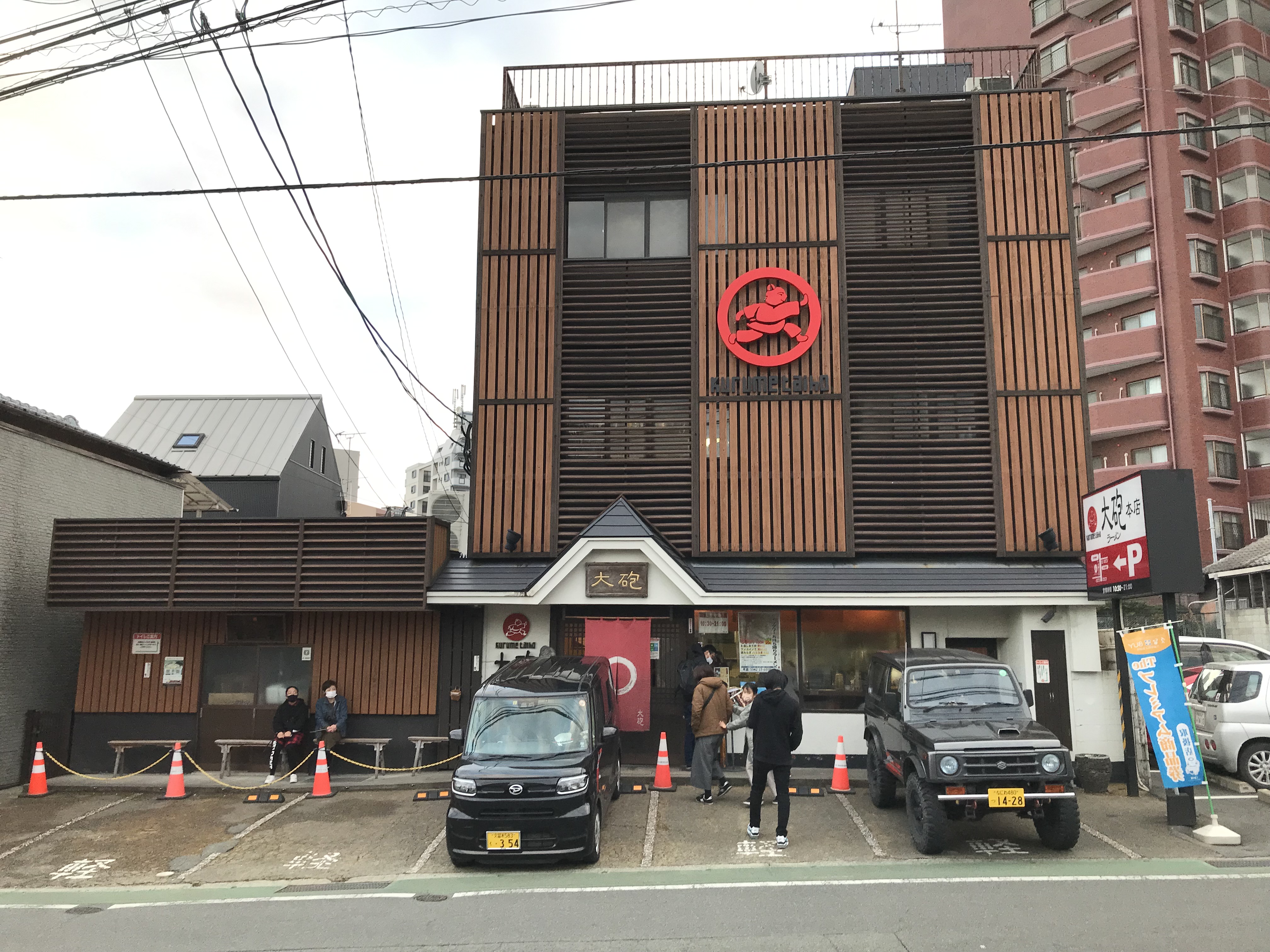
Kurume Taiho Ramen holds a distinct place in my heart. Not only was it one of two Fukuoka ramen shops I visited in 2018, it was the first eatery I returned to upon moving back to Japan. Now a full-time Fukuoka resident, I’ve returned to the Tenjin location a few times now. Recently, I made the pilgrimage to the main shop, the location I attempted to go nearly four years ago.
What makes their ramen so special?
A Brief History
Kurume Taiho Ramen opened their main shop in, well, Kurume back in 1953. The shop has remained there since, expanding to a few locations in Kurume and Fukuoka over the decades. The main shop is famous for its “perpetual broth,” in use since the restaurant’s opening 69 years ago.
When I researched ramen restaurants to visit four years ago, I stumbled upon this post from Finding Fukuoka. The post recommended Ganso Nagahamaya and Kurume Taiho Ramen.
What Is Tonkotsu Ramen?
Tonkotsu Ramen means “pork bone ramen” in Japanese. The thick, rich, and milky broth is made from simmered pork bones. The dish originated in Kurume and has since become a staple food in both Japan and across the globe. There are different variations of Tonkotsu Ramen, which differ based on the noodles used and richness of the broth.
Different Kinds of Tonkotsu Ramen
Kurume Taiho specializes in Kurume-style Tonkotsu. The Kurume variant features a thicker broth, which is regularly topped off as it simmers down As mentioned earlier, Kurume Taiho’s broth is 69 years old, in use at their main shop since 1953.
Ganso Nagahamaya, another ramen shop, originated Nagahama-style Tonkotsu. This variant features a thinner, lighter broth. I recall this variant being more milky-white in color and the noodles tasting very alkali.
Hakata-style Tonkotsu is a happy medium between the two. You get a rich broth that isn’t as thick as Kurume-style. Perhaps the most-famous variant of this style can be found at Ichiran, which has multiple locations across Japan. Ichiran even has locations in New York City!
My Experiences at Kurume Taiho Ramen
My first visit was to the Tenjin-Imaizumi location in 2018. I actually traveled all the way to Nishitetsu-Kurume station upon Google sending me to the “headquarters.” I found the Tenjin location, returned to Tenjin, and enjoyed a delicious bowl of Spicy Tonkotsu Ramen. It was the best bowl of ramen I had at the time. It was so good, in fact, that I vowed to return to this restaurant upon returning to Japan.
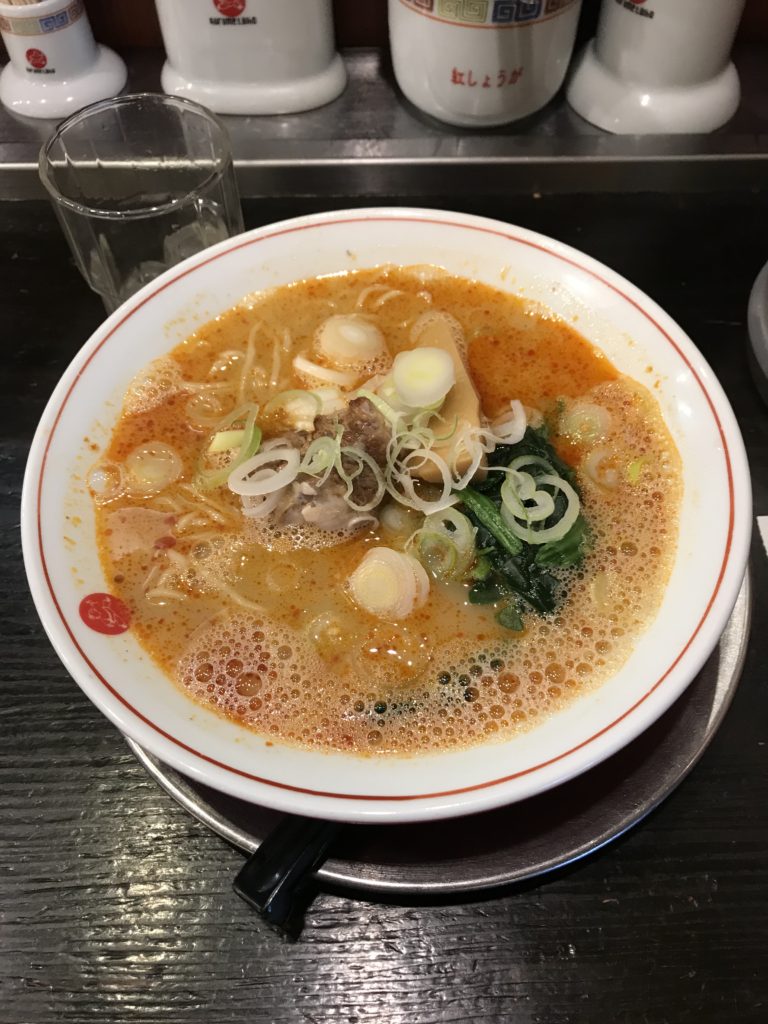
And that’s exactly what I did upon moving to Fukuoka to take part on the JET Program. I made my return visit at the end of October 2021, shortly after settling in to town. I still remembered my way to the shop as I walked through the Tenjin Underground past Ringo. While back at Kurume Taiho, I ordered the regular Tonkotsu ramen. It was delicious, albeit it wasn’t my ideal bowl of ramen. I felt the decorative ring of cha-shu was excessive, yet the pork was delicious.
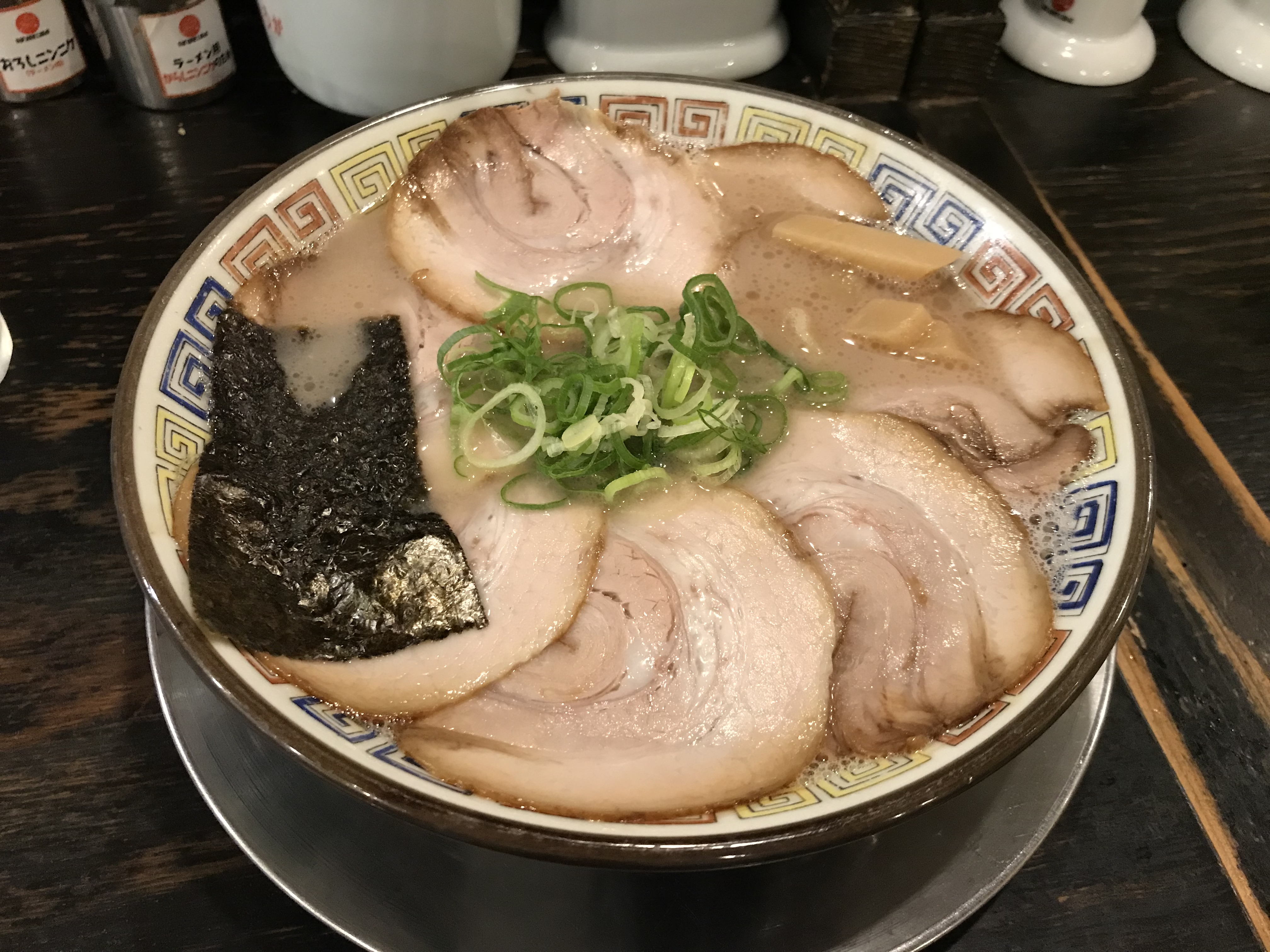
I returned in December 2021 while giving a city tour to another JET friend of mine. This time, I ordered the shoyu Tonkotsu Ramen. I found the sweet yet salty taste of the shoyu complemented the rich, decadent tontoksu broth well. It was my new favorite bowl of ramen in Japan! Plus, the noodles were perfect. I was in heaven and about to meet Tenjin himself. My friend was also happy with her bowl of ramen and will likely return here in the future.
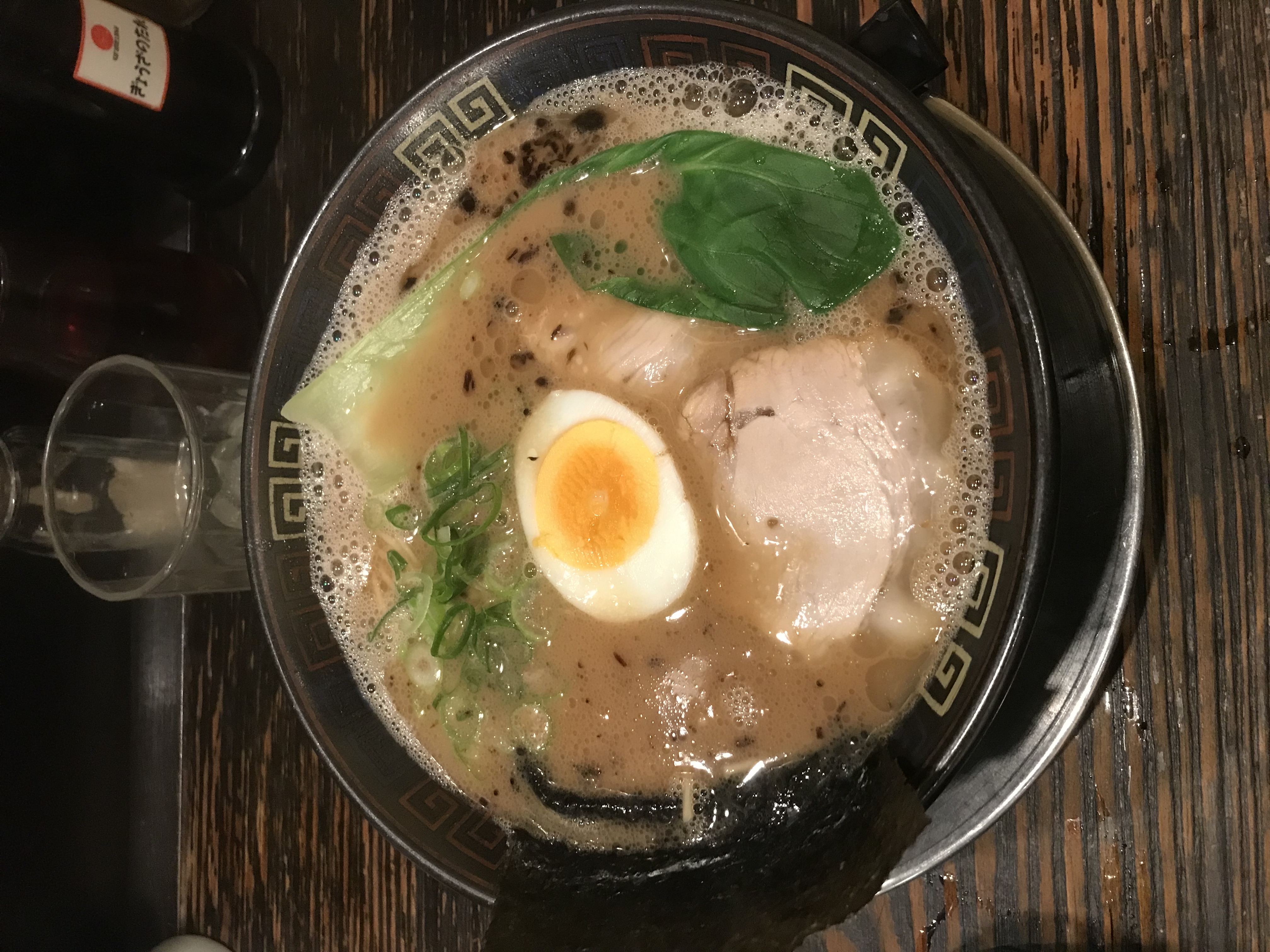
Visiting The Main Shop
Feeling adventurous, I found the main shop in Kurume and ordered the Shoyu Tonkotsu Ramen there. Unlike the Tenjin location, the main shop is a proper sit-down restaurant with menus! Unlike the Tenjin location, there was no vending machine in sight. Each seat featured menus with pictures of each dish. While the Tenjin location had English menus, the Kurume main shop did not. The main shop also sold bite-size Gyoza, a Fukuoka specialty, as well as other sides. The main shop, however, did not sell Ramune, while the Tenjin location does.

Shoyu-Tonkotsu from the Kurume Main Shop. Kurume, Fukuoka Prefecture 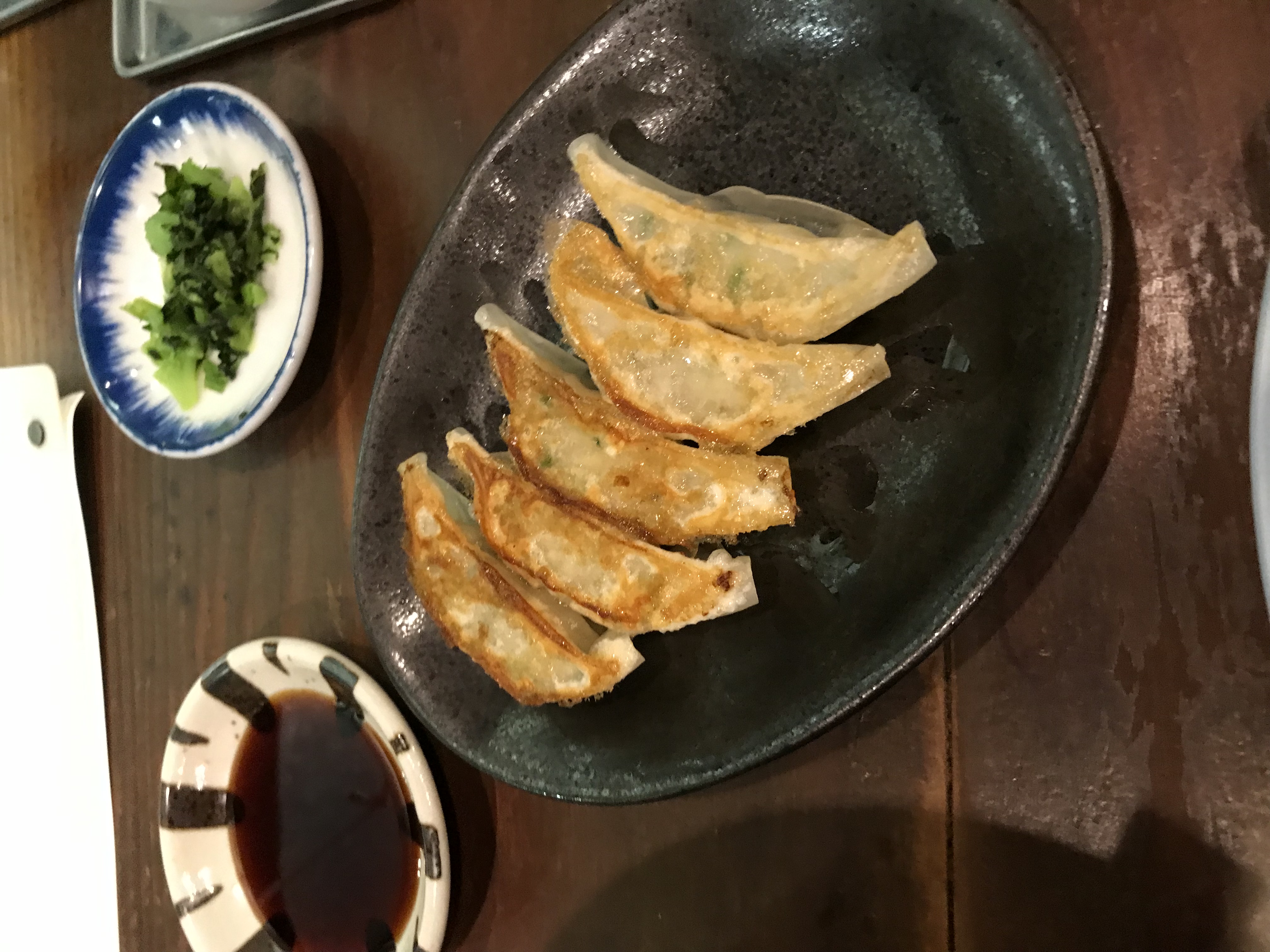
Gyoza from the Kurume Main Shop
I tasted the broth of the Shoyu Tonkotsu Ramen from the main shop; I was smacked by a freight train of porky flavor. It tasted almost as if I was licking a pig! Yes, I ordered the exact same ramen as the month prior, but this was different. I was tasting 69 years of culinary history with this bowl of ramen! Kurume Taiho outdid themselves again. THIS bowl of ramen, from the main shop, was my new favorite bowl of ramen.
When in Fukuoka (or Kurume)
If you could only have one bowl of ramen when visiting either Fukuoka or Kurume, make it Kurume Taiho Ramen. If possible, take the Nishitetsu down to Kurume and visit the main shop. Think of the best Tonkotsu ramen you’ve ever had. If not, think of the best bowl of ramen you’ve ever had. I’ve had Michelin-stared ramen, and let me tell you, Kurume Taiho makes the best bowl of ramen I’ve had so far.
One Reply to “Kurume Taiho Ramen: The King of Tonkotsu Ramen”